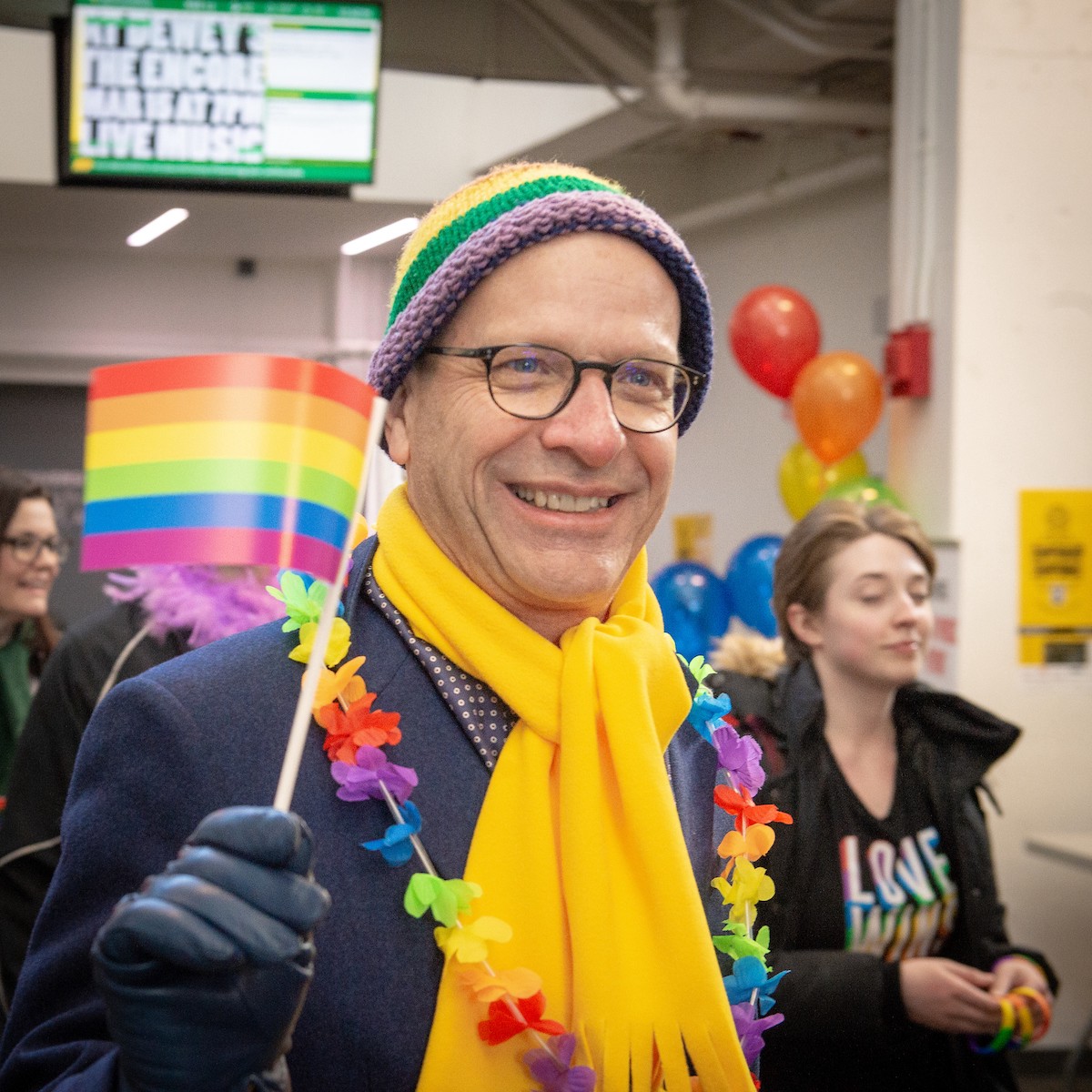
I started as a young closeted gay man as a student at this university in 1971. I studied in the Faculty of Arts for two years and then at the Faculty of Law for three years, graduating with an LLB in 1976. Throughout my five year term here, I met a grand total of zero students who openly identified as gay. I met a grand total of zero professors, teaching assistants and administrators who openly identified as gay. I knew a grand total of zero lawyers and judges who openly identified as gay.
There were no role models here or in the broader community for a young gay man.
It wasn't that there weren't any gay students or professors, lawyers or judges. I know that now. Rather, they were all in the closet, hiding their true identity from their friends, their families and their colleagues. And they were in the closet for good reason. There were no human rights protections for sexual minorities. There were significant risks of violence against sexual minorities. And you could be fired for being gay. Many employers, including orders of government, had express policies against hiring anyone who was gay. The federal government had a policy of rooting out and firing anyone in a senior position who they believed to be gay. The same was true for lesbians and bisexuals and persons of two spirits and certainly was true for transgender women and men.
Within the University itself, there were no LGBTQ clubs or supports. There was no statement of equality, diversity or inclusion within the University for LGBTQ students or staff and no policy against discrimination on the basis of sexual orientation or gender identity.
Similar challenges existed for all minorities here on campus. Women were significantly underrepresented as students in the law school. There were very few women professors. Female judges and partners of law firms were even more rare.
Indigenous persons were also seriously underrepresented. In fact, until Willie Littlechild graduated with my class in 1976, no Alberta treaty First Nations person had ever graduated from any law school.
Persons of colour were seriously underrepresented as were persons with disabilities.
None of this was unique to the law school. Discrimination against and under representation of minorities existed throughout the University and in all faculties.
We have come a long way since then. As just one small example, having both a gay board chair and a gay Chancellor, once unthinkable, is now a reality at this university. It may, in fact, be the first time in Canadian history that this has occurred at a major post-secondary institution.
But we need to be vigilant in protecting the advances we have made as an institution and as a society towards achieving equity, diversity and inclusion. Think of the shooting at the synagogue in Pittsburgh a few months ago. Closer to home, think of the speech in our province a few months ago drawing parallels between the gay pride flag and the Nazi swastika.
We have come a long way, but we still have a long way to go. And that is why the University has developed the new Equity, Diversity and Inclusion Strategic Plan.
This is important to the University. All students, faculty and staff, regardless of their personal characteristics or identity, benefit from an environment that is equitable, diverse and inclusive.
This is also important to society as a whole. Our current students are our future teachers, doctors, nurses, lawyers, engineers, and our future business, government and non-profit leaders. They are the future role models for minority youth throughout our city, province and country. They are also the future leaders who will guide our society to be more equitable, diverse and inclusive.
Achieving true equity, diversity and inclusion requires a shift in organizational culture. And changing culture is always challenging, especially in a highly decentralized organization like our university. Our policy has been drafted to reflect the structure of our institution and to place the responsibility for change on each and every one of us. Together, we can make this happen. We can make our university a place where everyone is respected and able to realize their dreams without fear of discrimination or disadvantage.
And looking back at my personal experience, never again will an 18 year old student feel it necessary to hide his or her true identity to feel safe, respected and valued at this institution.
Douglas R. Stollery, QC, LLM - Chancellor and Chair of the Senate

Douglas R. Stollery was installed as the 21st Chancellor of the University of Alberta on June 15, 2016. An alumnus of the U of A, he graduated with an LLB from the Faculty of Law in 1976 and with an LLM from Harvard Law School in 1980. He practised law with the firm of Reynolds Mirth Richards & Farmer LLP for a period of almost 30 years before joining PCL Constructors Inc. in 2006 as general counsel. He retired from PCL in 2013 and now serves as a community volunteer and as counsel to Reynolds Mirth Richards & Farmer LLP. His service to the legal profession includes serving as president of the Canadian Bar Association - Alberta Branch and a director of the Legal Education Society of Alberta.
Chancellor Stollery has also served as vice-chair of the board of governors of Grant MacEwan Community College (now MacEwan University) and served as chancellor of St. Stephen's College.
The above address was presented by Chancellor Douglas Stollery at the launch of the University of Alberta's Equity, Diversity, and Inclusion Plan on February 13, 2019.